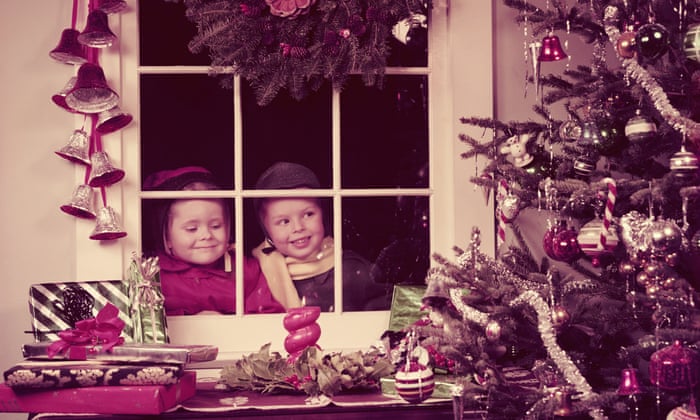
Christmas in the US in the 1950s. It is only recently that the season has become a celebration of domesticity. Photograph: H. Armstrong Roberts/Getty Images
One Christmas Day in the 1780s a London woman was murdered. Her husband testified that he had not the smallest recollection of where he had been that day because “he was so much in liquor”. Nothing unusual in that. In 1831 a man charged with being drunk and disorderly begged for leniency on the grounds that it was Christmas-time: the magistrate commented wearily that every person brought before him in the last three days had made the same plea.
It is a persistent fallacy, suggests Judith Flanders, that Christmas has only recently been rendered tawdry by commerce. As she repeatedly demonstrates in this exhaustive history, what a medieval cleric called “swilling and riot” accompanied, and often eclipsed, piety from the very start. In the sixth century, a father of the church was inveighing against the “majority” who “became slaves to gluttony” in the festive season, raving “in drunkenness and impious dancing”.
Flanders covers every aspect of Christmas – from mistletoe to the invention of Sellotape (essential for wrapping presents), from the knockabout violence of mummers’ plays to the 1914 Christmas truce (the respite, she notes, was used not so much for friendly football as for retrieving the corpses putrefying in no man’s land). She moves briskly over what is traditionally deemed to be the core of Christmas. Religion is a surprisingly small element. She is interested in nativity plays, not for their biblical content but for the way they illustrate her theory that modern Christmas is essentially performative. People “do” Christmas – lighting candles, cooking special meals, exchanging presents – to please an audience, usually of older or younger family members. Comparatively few single, childless adults decorate trees.
The performance has always been rowdy. Since the mid-19th century the revelry has tended to take place indoors, around a decorated hearth, but medieval Christmases were public. Every region of Europe had its local traditions. Flanders describes an infinite variety of processions, fairs, miracle plays and dancing in the streets.
These rituals turned the world upside down. King Edward I inserted himself into the story by offering the church a Twelfth Night gift of gold and myrrh and frankincense – but more often Christmas celebrated, not temporal power, but a vision of its overturn. Flanders describes lords of misrule and abbots of unreason, boy-bishops, costumed wild men and feasts of fools during which the powerless could play at power. This topsy-turvydom often involved cross-dressing – priests and clerks dressed as women. For a man to lay aside his male prerogative was to disrupt social hierarchy in the most radical way possible.
Food is essential to Christmas. Flanders writes about prodigious pies and boars’ heads, and about songs celebrating feasts when “there was fire to curb the cold, and meat for great and small”. This vision of universal hospitality, she thinks, is mere illusion, a 17th-century antiquarian’s dream of good old days. But the idea of the groaning board was something to sing about, whether in the Boar’s Head Carol or in numerous ditties about figgy pudding and roasted apples and mince pies. The message we should take away from all the lip-smacking enumeration of Christmas goodies is not that our forebears were gluttonous, but how hungry they were. Flanders points out that in A Christmas Carol Dickens is describing a family facing, not just a gloomy day without treats, but the prospect of starvation.
